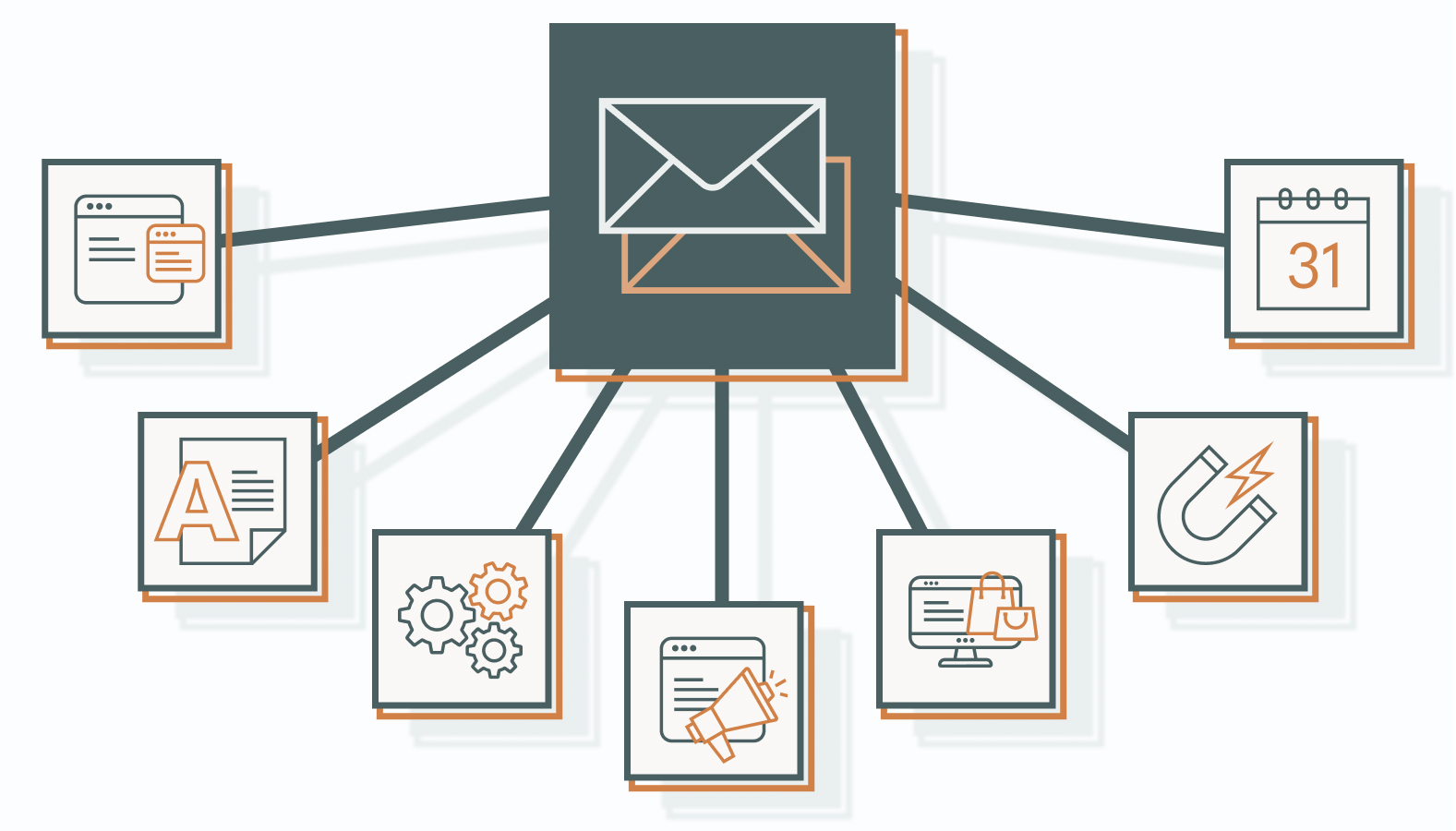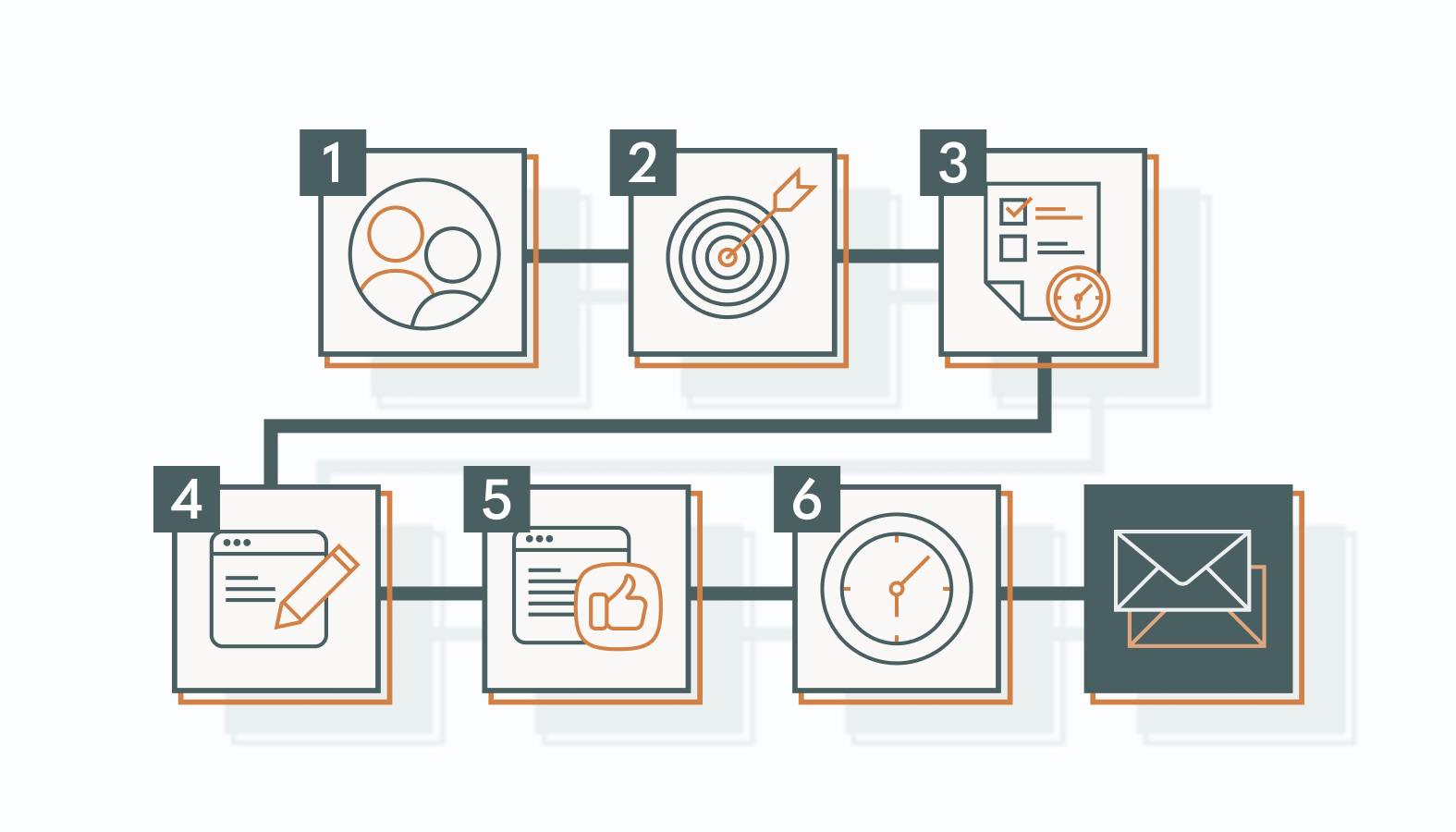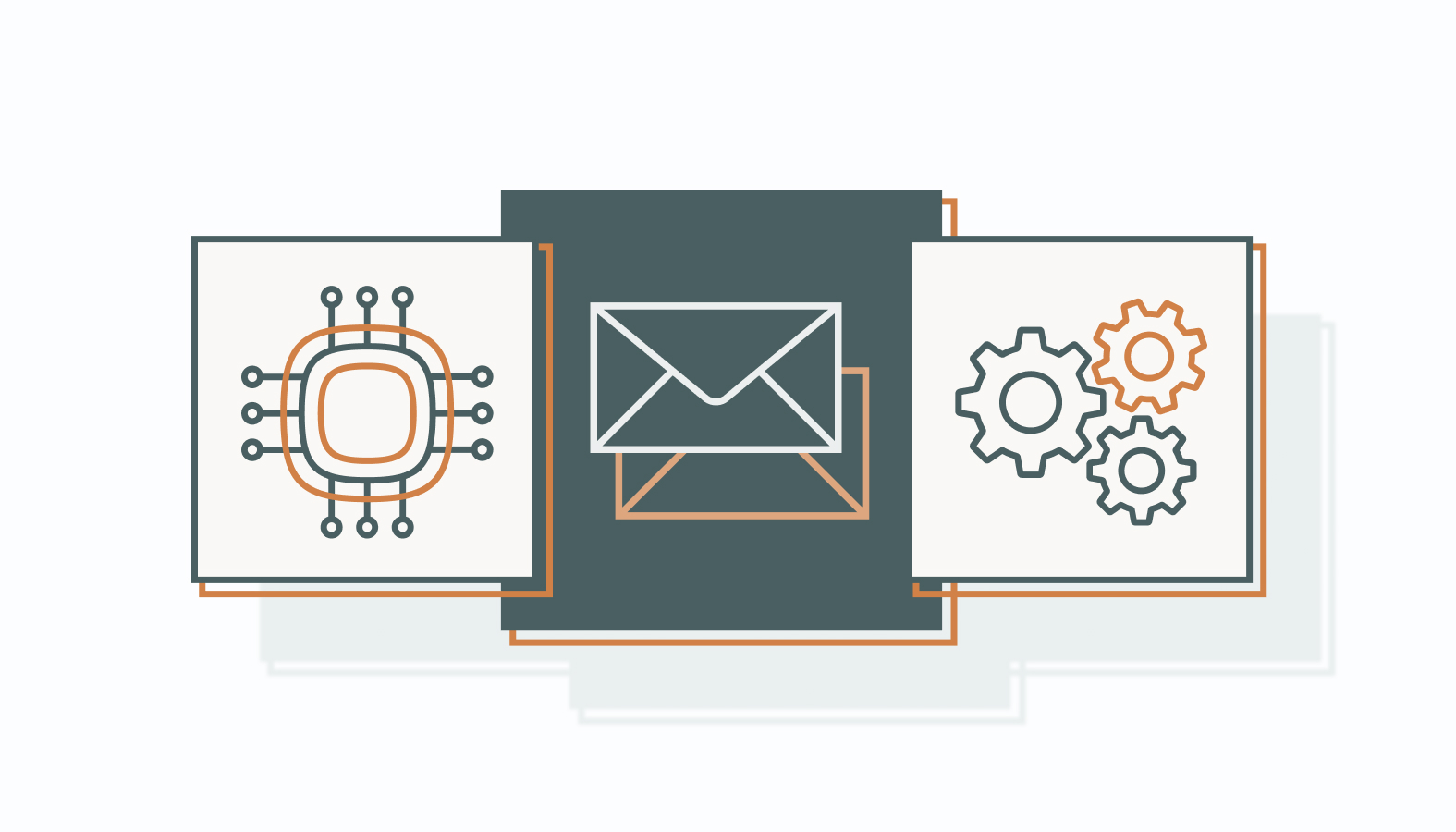Email marketing is still a potent force for businesses. It provides a direct line to potential and existing customers, allowing companies to build relationships and encourage sales.
However, creating successful email campaigns isn’t always easy.
Many businesses grapple with losing subscribers, getting emails opened, and understanding if their campaigns are truly working.
Take a small clothing boutique, for example. They’re excited to launch their new summer collection. How can they get the word out to the right people, spark interest, and ultimately boost sales?
Email marketing offers a viable path. By carefully dividing their customer list and crafting personalized messages with eye-catching visuals, the boutique can effectively showcase their new collection to the most receptive audience, leading to increased sales and stronger brand loyalty.
This article will explore tried-and-tested email campaign strategies and provide a step-by-step guide on how to overcome these challenges and execute successful email marketing campaigns that drive results.
Get to Know Email Marketing Campaigns
Email continues to be a reliable channel for reaching customers, making it a crucial tool for brands aiming to increase their visibility and impact.
Defining Email Marketing and Its Objectives
Email marketing is about sending targeted messages to a specific group of people through email. These messages can include promotions, newsletters, updates, and order confirmations.
The main goals of email marketing are to:
- Build relationships: Keep customers engaged and connected to your brand.
- Increase sales: Encourage customers to buy your products or services.
- Improve brand awareness: Remind customers about your brand and its values.
Email marketing focuses on creating valuable interactions with customers to grow your business.
How Emails Drive Your Marketing Goals
Emails are a powerful tool for achieving your broader marketing goals. Here’s how:
- Targeted messages: You can segment audiences based on demographics, behaviors, and preferences, then send emails to these specific groups of customers based on their interests. This approach makes your messages more relevant and helps you get more people to open and engage with your emails.
- High ROI: Email marketing is very cost-effective. For every dollar spent on email marketing, businesses typically earn $42 in return.
- Trackable results: You can quickly see how well your email campaigns perform by tracking open rates and click-through rates. This data helps you improve your future campaigns.
Using email effectively lets businesses build stronger customer relationships, increase sales, and achieve their overall marketing objectives.
7 Tried-and-Tested Email Campaign Strategies
Before mastering email marketing, it’s crucial to understand the different types of email campaigns. Each type has a unique purpose and can be customized to align with specific marketing objectives. These include:
1) Welcome Emails
Welcome emails are crucial for making a strong first impression and building a positive relationship with new subscribers. They often mark the initial interaction after someone joins your mailing list, so make them engaging and informative.
Tips for Crafting Effective Welcome Emails:
- Personalize the Message: Address subscribers by name and customize the content based on how they joined your list or their expressed interests.
- Set Clear Expectations: Clearly communicate what subscribers can expect from your emails, including their frequency and the type of content they’ll receive.
- Encourage Further Engagement: Prompt new subscribers to interact with your brand by following you on social media or exploring your website.
- Reinforce Brand Identity: Maintain a consistent brand voice, color palette, and visual style to strengthen brand recognition and create a cohesive experience.
2) Newsletter Campaigns
Newsletter campaigns are designed to keep subscribers informed and engaged by delivering regular updates, such as company news, blog posts, and industry insights. They are essential for maintaining a strong connection with your audience and providing ongoing value.
Strategies for Ensuring Quality and Relevance:
- Curate High-Quality Content: Focus on delivering valuable content that addresses your audience’s interests and concerns.
- Maintain Consistency: Establish a regular schedule for your newsletters, whether weekly, bi-weekly, or monthly, to build anticipation among subscribers.
- Segment Your Audience: Tailor newsletter content to different audience segments to ensure relevance and maximize engagement.
- Include Clear Calls to Action: Encourage readers to take specific actions, such as reading a blog post, registering for a webinar, or making a purchase.
3) Automated Emails
Automated emails streamline communication by delivering timely and relevant messages triggered by specific user actions, such as newsletter sign-ups or abandoned shopping carts.
This powerful approach significantly enhances the user experience and boosts conversion rates.
Here’s how to Set Up Effective Automated Workflows:
- Identify Triggering Events: Determine the specific actions that should trigger automated emails, such as sign-ups, purchases, or periods of inactivity.
- Create Relevant and Valuable Content: Ensure the content of each automated email is directly related to the triggering event and provides genuine value to the recipient.
- Test and Optimize Continuously: Regularly monitor the performance of your automated emails, A/B testing different subject lines, content, and send times to optimize results and maximize their effectiveness.
4) Promotional Emails
Promotional emails are designed to drive sales by offering special deals, discounts, and limited-time promotions to encourage immediate customer action.
When executed effectively, these campaigns can yield significant results. Here are some tried-and-tested strategies for crafting enticing promotional emails:
- Highlight the Offer: Use eye-catching headlines and compelling visuals to showcase your promotion clearly.
- Create a Sense of Urgency: Incorporate time-sensitive language, such as “limited time only,” to motivate immediate action.
- Use Strong Calls to Action: Ensure your call-to-action buttons are prominent and encourage immediate clicks.
- Segment Your Audience: For improved results, tailor promotional emails to specific customer segments based on their past purchase history or expressed preferences.
5) Transactional Emails
Transactional emails provide essential information related to customer transactions, such as order confirmations, shipping updates, and account notifications.
While primarily functional, these emails also present valuable opportunities to engage with customers.
How to Make Your Transactional Emails Work Harder:
- Clarity and Conciseness: Ensure transactional emails are clear, concise, and easy to understand, providing all necessary information without overwhelming the recipient.
- Explore Cross-Selling Opportunities: Include relevant product recommendations based on the customer’s recent purchase to encourage additional sales.
- Reinforce Brand Identity: Maintain consistent visual branding and messaging across all transactional emails to strengthen brand recognition and customer loyalty.
6) Re-Engagement Emails
Re-engagement emails are designed to reconnect with subscribers who haven’t interacted with your emails in a while. These campaigns are crucial for maintaining a healthy email list and improving overall engagement.
Strategies for Reconnecting with Inactive Subscribers:
- Segment Your Inactive Subscribers: Identify and segment subscribers based on their level of inactivity to tailor your re-engagement efforts effectively.
- Offer Compelling Incentives: Entice inactive subscribers back to your brand with exclusive discounts, special offers, or access to valuable content.
- Gather Feedback: Encourage recipients to provide feedback on why they’ve become inactive. This valuable input can help you improve your email marketing strategy and better serve your audience.
7) Seasonal Campaigns
Seasonal campaigns leverage the unique opportunities that arise throughout the year, aligning your marketing efforts with your customers’ changing moods and buying behaviors during holidays and special events.
These campaigns can generate excitement and drive significant sales during peak shopping periods.
Creative Ideas for Designing Engaging Seasonal Email Campaigns:
- Embrace the Holiday Spirit: Create themed campaigns that resonate with the spirit of relevant holidays or special events within your target audience.
- Visualize the Season: Incorporate festive imagery and colors that evoke the essence of the season, creating a visually appealing and immersive experience for your subscribers.
- Offer Exclusive Seasonal Promotions: Encourage purchases by offering enticing seasonal discounts, limited-time offers, and exclusive deals explicitly tailored to the occasion.
Step-by-Step Guide on Executing an Email Marketing Campaign
Ready to put your knowledge of email campaign types into action? This step-by-step guide will provide you with a comprehensive framework for successfully navigating the email marketing process.
Identify Your Audience
Knowing your audience is key to successful email marketing. It’s like getting to know your customers personally – their likes, dislikes, and what makes them tick.
By understanding their demographics, interests, and behavior, you can create emails that truly connect with them. This leads to more people opening your emails, clicking on links, and ultimately, building stronger relationships with your brand.
Strategies for Segmenting Your Audience:
- Dive into Past Interactions
Analyze the performance of your previous email campaigns.
Which segments consistently open, click, and convert? What topics and offers resonate most with them? These insights provide valuable clues for future segmentation efforts.
- Leverage Purchase History
Your customers’ past purchases tell a story. What products or services do they repeatedly buy? What are their preferred price points and brands?
Utilize this purchase history data to create segments based on customer preferences and buying behaviors.
For example, you could segment customers into “frequent buyers,” “high-value customers,” or “product enthusiasts.”
- Gather Rich Demographic Data
Utilize sign-up forms and surveys to collect valuable demographic data such as age, location, occupation, and interests. This information allows you to create more targeted segments and tailor your messages accordingly.
For instance, you can create segments based on age to offer age-appropriate products or promotions.
- Continuously Monitor Behavioral Patterns
Track how your subscribers interact with your emails.
Do they consistently open emails at specific times? Do they click on certain links more frequently than others?
Monitor these behavioral patterns and use them to refine your segments over time. This ensures that your targeting remains accurate and effective as your audience evolves.
By employing these strategies, you can effectively segment your audience and deliver highly personalized messages that resonate deeply.
Define Your Campaign Goals
Setting clear goals is crucial for guiding the development and execution of your email marketing campaign. It’s like having a roadmap – it guides your efforts, keeps you on track, and helps you determine if you’re actually reaching your destination.
Using the SMART criteria—specific, Measurable, Achievable, Relevant, and Time-bound—ensures that your goals are not just aspirations but concrete targets you can actively work towards.
Examples of Common Email Marketing Goals:
- Increase Open Rates: Instead of a vague goal like “improve open rates,” aim for something specific: “Increase open rates by 15% within the next two months.” This clearly defines the desired outcome, the timeframe, and the expected improvement.
- Boost Conversion Rates: Set a target for the number of recipients who take the desired action. For example, “Increase the click-through rate on our product launch email to 5% by the end of the week.” This provides a measurable and achievable goal.
- Expand Subscriber Lists: Aim to grow your email list by a specific number of subscribers within a set timeframe. For instance, “Acquire 500 new email subscribers through our lead magnet offer within the next 30 days.” This goal is specific, measurable, and time-bound.
Aligning these goals with broader business objectives will help you measure success and make informed decisions throughout the campaign.
Plan Your Campaign Timeline
Creating a detailed campaign timeline is essential for ensuring the smooth execution of your email marketing campaign. It acts as a roadmap, ensuring all tasks are completed on time, and the entire campaign flows seamlessly.
Steps for Creating a Campaign Timeline:
- Drafting Compelling Content: Allocate ample time for crafting high-quality email content. This includes writing persuasive copy, selecting engaging visuals, and ensuring the overall design is visually appealing and aligns perfectly with your brand identity.
- Thorough Review and Rigorous Testing: Schedule time for internal reviews and rigorous A/B testing. This allows you to refine your email content, subject lines, and overall design to maximize engagement and conversion rates.
- Strategic Email Delivery: Determine the optimal dates and times to send your emails. Consider your audience’s habits and preferences. When are they most likely to be checking their email? Experiment with different send times to identify the most effective delivery windows.
- Coordination with Other Marketing Activities: Align your email campaign with other marketing initiatives, such as social media campaigns, paid advertising, or product launches. This creates a synergistic effect, amplifying the impact of your overall marketing efforts. For example, if you’re launching a new product, consider sending a teaser email campaign leading up to the launch.
- Build in Flexibility: While a well-defined timeline is essential, you should still be flexible. Unexpected delays or unforeseen circumstances may arise. A buffer built into your schedule allows you to adapt and adjust as needed.
Crafting Engaging Content
Compelling email content is the heart of any successful campaign. It captures your audience’s attention, piques their interest, and ultimately drives them to take action.
Think of it as a conversation. You want to inform and engage your subscribers, building a genuine connection with them.
Tips for Writing Engaging Email Copy:
- Start with a Knockout Subject Line: Your subject line is your first and often only chance to make an impression. Craft attention-grabbing subject lines that are both intriguing and relevant to your audience. Consider using questions, intriguing statements, or even a touch of humor to pique their curiosity.
- Prioritize Clarity and Conciseness: Nobody wants to wade through lengthy, convoluted emails in today’s fast-paced world. Ensure your message is clear, concise, and easy to read. Use short paragraphs, bullet points, and headings to break up the text and make it more scannable.
- Incorporate the Power of Storytelling: Stories are inherently engaging. Weave compelling narratives into your emails to connect with your audience on a deeper level. Share customer success stories, behind-the-scenes glimpses into your brand, or even personal anecdotes to humanize your brand and build stronger relationships.
- Personalization is Key: Generic emails quickly land in the trash. Tailor your email content to individual recipients based on their past interactions, purchase history, and expressed interests. This level of personalization shows that you value their time and understand their unique needs.
Choose the Right Email Format
In addition to using the appropriate email type for your campaign, the email format directly affects how many people engage with your emails, how likely they are to be delivered, and, ultimately, how well your email marketing performs.
Decide between plain text and HTML emails based on your audience’s preferences and the complexity of your content.
- Plain Text:
Plain text emails are simple, straightforward, and easily readable across all devices and email clients. They are generally favored for their simplicity and high deliverability rates, as email providers are less likely to flag them as spam.
However, plain-text emails lack the visual appeal and interactive elements that HTML emails offer.
- HTML Emails:
HTML emails allow rich formatting, including images, videos, interactive elements, and custom fonts. This flexibility enables you to create visually appealing and engaging emails that capture attention and effectively convey your brand’s personality.
However, excessive use of images or complex coding in HTML emails can negatively impact deliverability rates and may cause issues with rendering on some email clients.
To maximize the effectiveness of your email marketing efforts, carefully consider your audience, your campaign goals, and the specific message you want to convey when selecting the most appropriate email format.
Optimize Delivery Time
When you send your emails matters. Sending emails at the right time can enhance open rates and overall engagement.
Factors to Consider for Optimizing Send Times:
- Audience Time Zones: Know where your subscribers are located and schedule your emails to reach them at optimal times based on their time zones.
- Engagement Patterns: Analyze past performance data to identify trends in when your audience is most likely to engage with your emails.
- Testing Send Times: Conduct A/B tests to experiment with different send times, then analyze the results to refine your strategy.
Harnessing Technology to Boost Your Email Campaigns
To get the most out of your email marketing, leverage the power of technology.
The right tools and automation can boost engagement, simplify your workflow, and deliver personalized experiences that truly connect with your audience.
Essential Tools and Platforms for Success
Here’s an overview of three popular robust email marketing platforms:
- Mailchimp: This popular email marketing platform is known for its user-friendly interface and extensive features, including customizable templates, advanced analytics, and robust segmentation options. It seamlessly integrates with various e-commerce and CRM systems to streamline campaign management and track performance.
- Campaign Monitor: Another go-to email marketing platform, Campaign Monitor is renowned for its visually appealing email designs and intuitive drag-and-drop builder. It also offers powerful analytics, personalized content capabilities, and robust automation features to streamline workflows and enable marketers to create targeted campaigns effectively.
- HubSpot: This comprehensive inbound marketing software integrates powerful email marketing capabilities within its suite. It is built with advanced tracking, A/B testing, and seamless CRM integration to enable highly personalized and data-driven campaigns, while its automation tools effectively nurture leads through targeted email sequences.
Elevate Engagement with Automation and Personalization
Automation revolutionizes email marketing by streamlining processes, saving time and resources while enabling personalized content delivery that significantly enhances audience engagement.
Triggered emails are automated based on subscriber actions like newsletter sign-ups or abandoned carts. They deliver timely and relevant messages and boost engagement.
Furthermore, automation empowers marketers to segment their audience based on behavior, preferences, and demographics, facilitating the delivery of highly personalized content tailored to each group’s unique interests.
Examples of Automated Email Sequences:
- Welcome Series: Upon signing up for your newsletter, new subscribers receive a series of welcome emails that introduce them to your brand, highlight key offerings, and encourage them to engage with your content.
- Abandoned Cart Emails: If a customer adds items to their cart but doesn’t complete the purchase, an automated email can be sent as a reminder. This email may include product recommendations or a discount code to incentivize the purchase.
- Post-Purchase Follow-Up: After a customer makes a purchase, an automated sequence can thank them for their order, provide shipping details, and suggest related products based on their purchase history.
Ready to Take the First Step? Launch Your Email Marketing Campaign Today
The strategies outlined in this guide provide a solid foundation for crafting impactful email campaigns that resonate with your audience and drive significant results for your business.
Remember, email marketing is an ongoing journey of continuous improvement.
Let’s Unlock Your Email Marketing Potential
We understand that navigating the world of email marketing can sometimes feel overwhelming. That’s why we’re here to help!
If you’re seeking guidance on implementing these strategies or want to brainstorm ideas, we invite you to schedule a casual conversation with one of our email marketing experts.
There’s no pressure, just a friendly discussion to explore how strategic email marketing can empower your brand and achieve your business goals. We’re passionate about helping you succeed and eager to share our expertise.









